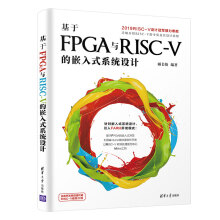书摘
变化的商学院
A changing business school
Following the demolition of the Dairy Farmers Co-operative Milk Company’s warehouse in 2010, until the beginning of preliminary excavation in early 2012, the site of the Dr Chau Chak Wing Building was used as an open-air parking lot. In those days the place looked more or less like a void surrounded by other, yet-to-change, rusty and muddy spaces. In early 2010 the new Goods Line pedestrian link didn’t exist; most of the new UTS facilities were still on paper and Frank Gehry’s first sketch of the Dr Chau Chak Wing Building was still to be drawn. How, then, have we moved from that situation to the one we can experience today? How, in other words, did change take place?
Building a new facility is neither a matter only of designing it (see Concept, p.81) nor is it only a matter of complex engineering calculus and complex, demanding and skilled work (see Construction, p.121). Before design, bricks, joints, concrete and cables fit together there are people who meet, speak, argue … and dream of possible futures. The building may not even be there in their thoughts: it materialises only at a certain point, as an intersection of needs, wishes and actions that, like threads, become woven into a fabric. To grasp how this actually occurs we need to confront the process of change. Rather than understanding change in its most canonical form — as matter of stages, a passage from A (the parking lot) to B (the building) — one needs to focus on the processual movements between A and B. In other words it is necessary to move from a macro perspective — which tells us the obvious: we don’t have a parking lot anymore — to a micro one:
[F]rom a distance (the macro level of analysis), when the observer examines the flow of events that constitute organising, they see what looks like repetitive action, routine, and inertia dotted with occasional episodes of revolutionary change. But a view from closer in (the micro level of analysis) suggests ongoing adaptation and adjustment.1
Looking closely at these micro-movements it is possible to unravel the heterogeneous set of material and immaterial elements that gradually become woven together, held together by the discursive, visionary and emotional bonds they share (and by the power and interests guiding them). Despite what the commercial management literature says, the process is not necessarily a harmonious one and cannot be planned in the form of a step-by-step guide. As the story of the Dr Chau Chak Wing Building commission shows, processes of change are characterised not only by careful planning and hard work but also by their alignment to other changes (both contextual and broader) and serendipitous encounters.2
We have already addressed the first contextual change — initiated both by the UTS City Campus Master Plan and by other developments affecting Ultimo (see Context, p.17). The second broader change influencing the development of the Dr Chau Chak Wing Building related to the ways in which business education has gradually been subject to redefinition, rethinking, indeed, even contestation, in recent years. Such redesign has been made in an attempt to address the challenges of an increasing globalising world, as well as in response to the perception by many commentators that business schools, particularly in their finance and economics disciplines, were a contributory factor inducing the irrational exuberance of financialisation that bankrupted major economies globally. Leading business schools are thus redesigning their curricula, introducing a new emphasis on interdisciplinary approaches, experiential learning, and creativity, which are perceived, in part, as a panacea for the above issues.3 The new emphasis parallels a renewed attention being paid to those spaces in which learning takes place, typified by the increased number of business schools designed by internationally renowned architects.4 The changes undertaken by the UTS Business School can be seen as largely aligning with this framework. The alignment was initiated with the appointment of a new dean for the UTS Business School in 2008, Professor Roy Green. Green had a clear idea of how to pursue UTS’ main goal (to become a ‘world leading university of technology’), in part informed by what other global business schools were doing at the time:
……
展开










